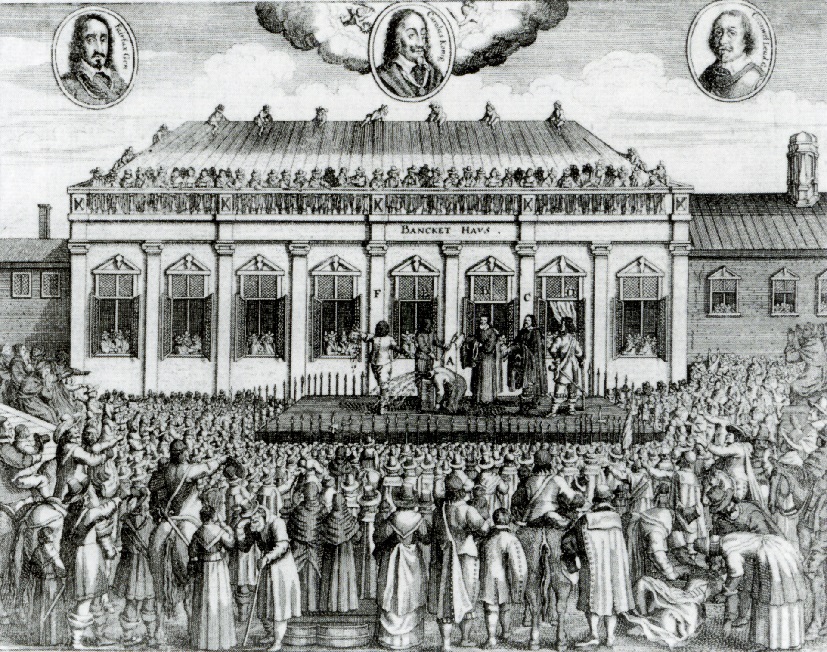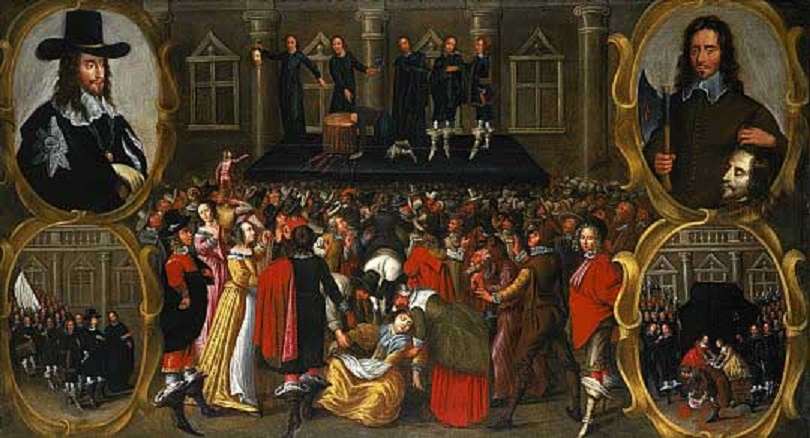
The Execution of Charles I

Introduction
The Army had promised to bring 'that man of blood' to account. On 30 January 1649, Charles I was executed.
After you have studied this webpage, answer the question sheet by clicking on the 'Time to Work' icon at the top of the page.
Links:
The following websites will help you research further:
The Execution:
•
A detailed anonymous eyewitness account,
written in 1650, by someone who had access to the official documents of the
time.
• Modern videos of the execution:
- from the film Cromwell (1970),
- from the film To Kill a King (2002),
- from
the drama series The Devil's Whore (2008) (includes the trial)
Execution in Whitehall
1 This account of the execution is from an old textbook, The Early Modern Age (1972) by L.E. Snellgrove.
On Tuesday, 30 January 1649, Charles I was brought to his own Banqueting Hall in Whitehall, London. It was a gloomy, cold day, white with frost and snow.
A troop of soldiers . . . surrounded the black-draped scaffold set in front of the building. Dense crowds surged forward, stretching their necks to see him and calling out prayers and blessings. The scaffold itself was packed with officers and clergy. Charles's executioners were disguised by cloaks, masks and obviously false hair and beards.
Charles then stripped off his jewels and his outer clothing. The block was only ten inches high so he had to lie flat to place his head on it. After a few seconds, he gave a signal to the executioner. The axe swung down, cutting off his head at one blow.
Contemporary depictions
2 A Dutch engraving from the time. How far can you trust it?

3 A Royalist painting showing the execution of the king. The main picture shows Charles taking off his cloak, then being beheaded. The side pictures show Charles, the procession to the scaffold, the executioner with the head, and people dipping handkerchiefs in the blood. How far can you trust this painting?

4 This eyewitness account of the execution was written by Philip Henry, a 17-year-old who was living in London at the time. Philip Henry was the son of John Henry keeper of the King's Orchard and, as a child, the young Philip had been a playmate of the King's sons. How far can you trust what he writes?
On the day of his execution I stood amongst the crowds in the street before Whitehall gate, where the scaffold was erected, and saw what was done, but was not so near as to hear anything. The blow I saw given, and can truly say with a sad heart. At the instant whereof, I remember well, there was such a groan by the thousands then present as I never heard before and desire I may never hear again.
A troop (of soldiers) immediately marched from Charing Cross to Westminster, and another from Westminster to Charing Cross, purposely to disperse and scatter the people; so that I had much ado amongst the rest to escape home without hurt.